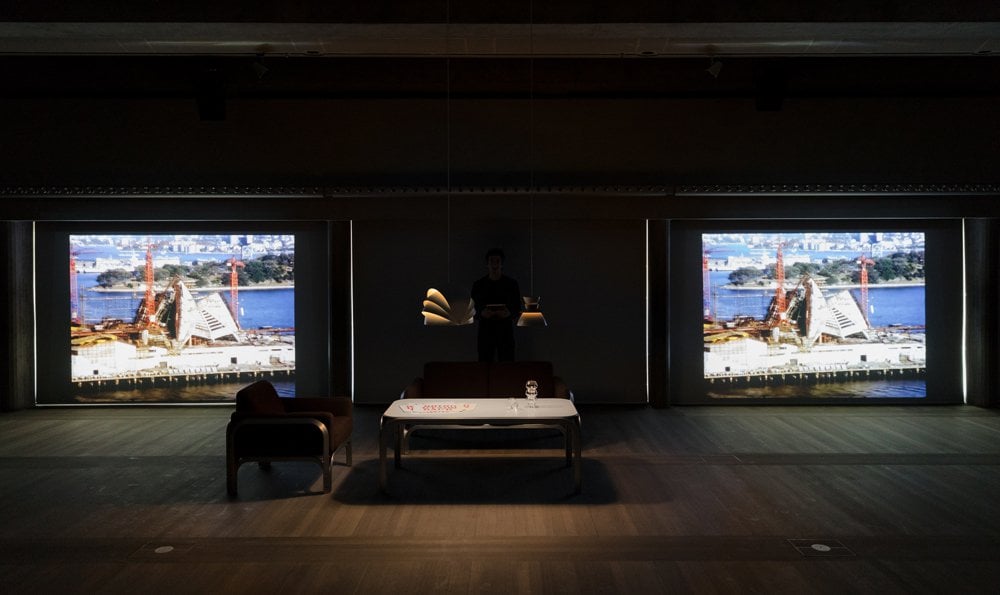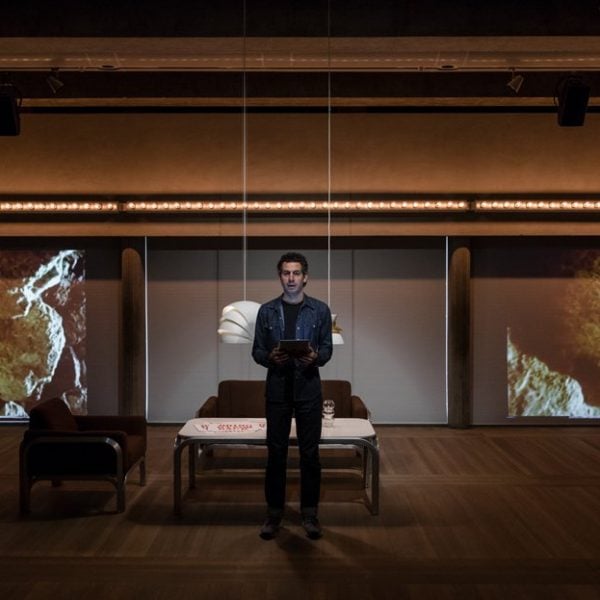Home Participants 21st Biennale of Sydney (2018) Rayyane Tabet
Rayyane Tabet


Rayyane Tabet
Born 1983 in Achkout, Lebanon Lives and works in Beirut, Lebanon

In Dear Mr. Utzon, 2018, Tabet uses a series of found objects as a means of accessing latent histories. Focusing on the connection between two disparate locations, Beirut and Sydney, Tabet presents a performance that looks at renowned architect Jørn Utzon’s design for the Sydney Opera House alongside his unrealised plan to construct a subterranean theatre at Jeita Grotto, the limestone caves in Lebanon. Following the form of an open letter addressed to the architect on the eve of his 100th birthday, Dear Mr. Utzon provides the artist with a way to position himself in relation to the city, by way of Utzon’s ties to Sydney and Beirut.
Inspired by an archival image of Utzon at home with his family, Tabet transforms the Utzon Room at the Sydney Opera House into a domestic interior. The artist has included a lounge suite from Utzon’s ‘A New Angle’ furniture system, designed during the construction of the Opera House and acquired in 2006. Above the suite an original ‘U336 Lamp’ released by Artek in 1957 is suspended, alongside an ‘Opera’ pendant, launched in 2005. Other Utzon-designed objects, models, and archival material relating to both the Opera House and the Jeita Grotto project have been carefully placed in the room to construct an intimate space. The site of the performance is a significant location considering its interior design is the only one completed by Utzon in the building.
Tabet is particularly interested in disclosing a more informal portrait of the architect, focusing both on minor and major stories connected to both projects. Starting from the welcoming space of a domestic setting, Tabet’s narrative gradually recovers lesser-known, obscured stories, either tenuously or directly associated with the Sydney Opera House or the Jeita Grotto.
The only physical remnant of the performance are reproduced leaflets, distributed at each venue of the 21st Biennale of Sydney, which read ‘BRING UTZON BACK’. Designed and printed by a group of young architects during the controversy surrounding Utzon’s dismissal from the Opera House project in 1966, the leaflet can be read as a metaphor for, and concise summation of, Tabet’s project.
Rayyane Tabet’s practice focuses on the use of objects, often of a personal nature, as a starting point for the exploration of memory and individual narratives. Tabet’s sculptural works, clearly influenced by his studies in architecture, act as a counterpoint to official histories; giving agency to subjective understandings of major socio-historical events. Despite their grounding in extensive research, his works usually manifest as stark, minimalist forms. Tabet’s sculptures attest to the power of the object to articulate its own history, resulting in the frequent comparison of his methodology with that of an archaeologist.